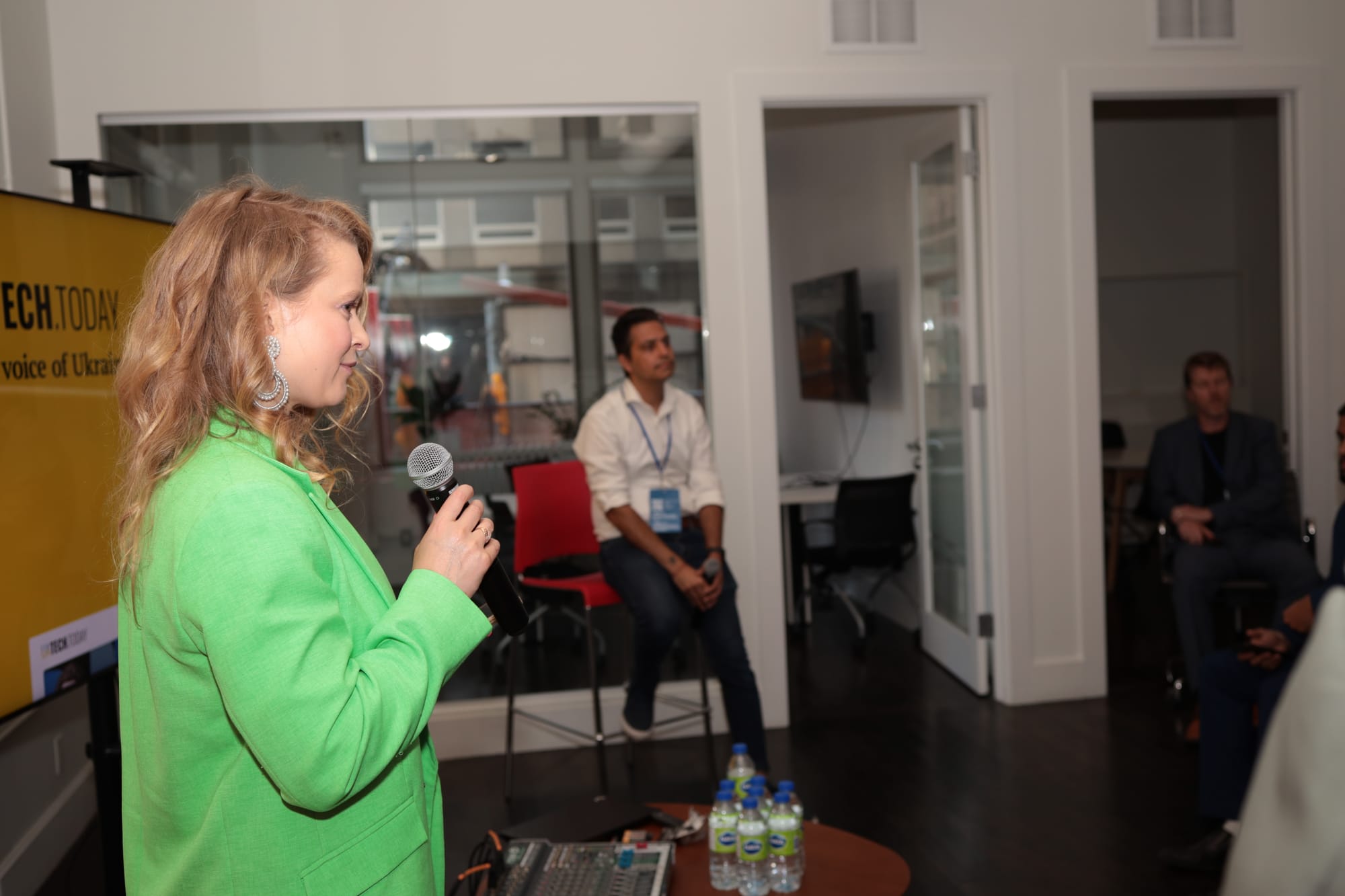Foreword: Hello, UATech.today crowd! As a Fintech Editor of UATech.Today, I am presenting to you a vision of a new era in launching and building products in our space. Whether you're running a service business, navigating tough sales cycles or creating a product startup debating “buy vs build,” this article breaks down a third path — one that’s gaining traction across global fintech, and is on a good track to be mirrored in many other tech industries. As an ex-board member of a number of software development companies and currently a builder of a lending automation platform, I’ve seen both sides. In this article, I want to share what works when launching financial products today, especially in ecosystems like ours.
I recently read a sharp insight from Saanya Ojha, Partner at Bain Capital Ventures, that struck a chord:
“Any guesses for the largest enterprise AI company last year? Accenture… While model companies burn billions on compute to make models smarter, systems integrators like Accenture are cashing the checks — helping enterprises figure out how to actually use them… Who maintains the thing? Who integrates it into your stack? …That’s not free. That’s not simple. That’s not going away.”
This reflects something I’ve seen time and again in fintech: it’s not enough to build powerful tools. What really matters is how they’re used and adopted. The industry isn’t choosing between out-of-the-box or fully bespoke anymore. Instead, we’re entering a new phase where modularity, openness, and adaptability are shaping how financial products come to life.
Traditionally, financial institutions have had two dominant paths to bringing new products to life:
1. Off‑the‑Shelf Solutions
These come with polished user interfaces and basic regulatory compliance, and promise rapid deployment — if you’re lucky enough to align everything just right! Still, while they can be faster to launch, they often fall short on deeper needs: nuanced workflows or seamless integration into existing tech stacks.
A couple of weeks ago, I had a conversation with the CEO of an innovative lending company serving over 60 million gig workers in the U.S., and here’s what his statement was: “With off-the-shelf platforms, the amount of customization often negates the value of building organically.”
That insight stuck with me, and actually echoed what I hear regularly from financial institution leaders I engage with as a fintech founder.
2. Fully Bespoke Systems
These are built in-house or with dedicated software development firms, customized from the ground up to match exact business requirements. While the fit is precise, the trade-offs are significant:
- Development is expensive
- Timelines are long
- Maintenance becomes a growing operational burden.
Yes, you own the entire system. But you also own every risk — compliance, scalability, reliability, and staffing. The more your internal team is involved in upkeep, the more technical costs blend with HR, admin, and long-term overhead. What begins as a high-investment strategy often becomes a cycle of escalating maintenance spend.

I've Lived Both Sides of the Fintech Build
Over the past 12 years in business development and entrepreneurship, I’ve had a front-row seat (and often, a steering wheel) in both worlds: building fully bespoke fintech systems and launching off-the-shelf platforms.
I’ve held leadership and C-level roles across five software development firms, and advised at least five more. As General Partner at Nika Tech - a family office which backs service-based businesses of Ukrainian origin with global distribution, I also sat on the board of Upplabs, a fintech-focused software development company. From that vantage point, I watched the shift unfold long before it became obvious: institutional clients wanted tech they could own, but without the drag of heavy-lift development.
Speed mattered. So did precision. And above all… Compliance had to be non-negotiable.
That insight deeply shaped what we’ve built at Neofin. We started off with a clear intention: to offer a lightweight, no-code lending infrastructure that could adapt quickly to our clients’ needs. It worked. But after a full year of close customer development, another hard truth emerged: the traditional off-the-shelf model, even when flexible, started hitting ceilings: too rigid here, too boxed-in there.
As regulatory demands intensify and product cycles shrink, financial institutions are looking for a new path forward. They want agility and control. Customization and speed. Ownership without the endless complexity.
What they’re really asking for is a new model. A hybrid one. Let’s unpack what that means, and why it’s already reshaping the way financial products are brought to life.
So Where’s That Hybrid Sweet Spot?
The insight from Saanya Ojha that opened this article about AI not just being about capability, but about application, is exactly mirrored in fintech. Raw power doesn’t mean much if it isn’t paired with seamless integration, responsible maintenance, and sustainable governance.
And that’s exactly where financial product development is headed today. It’s no longer about choosing between building everything or buying everything. It’s about assembling the right stack and doing it wisely.
The new model hinges on four pillars:
- Selecting best-fit modules: Not every institution needs to reinvent the wheel. The key is choosing the right pre-built solutions for specific business needs, whether it’s KYC, risk scoring, or customer messaging.
- Ensuring interoperability: Systems can no longer live in silos. Every component must communicate smoothly with others, often across providers, departments, and geographies. This is where the solution provider’s ego that says “We want to cover every part of the customer’s systems” must meet the truth of what actually works best for the customer and should be integrated properly.
- Rapid configuration: Time-to-market is everything. Fintech products must be launched fast, tested live, and iterated in real time.
Long-term support: Owning and operating a system over time is no less important than actually building it. That means thinking ahead: maintainability, upgrades, compliance audits, and scale.
In short, the future belongs to cluster-based architecture, where open APIs, sandbox environments, and ready-made templates converge with tailored implementations, driven by real business context.
Not a compromise between off-the-shelf and bespoke, but rather a synthesis of the best of both worlds.
Open APIs Everywhere — And This Is Just the Beginning
Some of the biggest players in financial services have already begun laying the groundwork for a hybrid, developer-driven future.
J.P. Morgan’s Payments Developer Portal, launched in mid‑2024, was a clear signal to the industry. It offered developers access to sandbox environments for global payments, virtual cards, fraud monitoring tools, reporting APIs, and more. The launch wasn’t both technical AND cultural. A “shot across the bow” for traditional banking models, showing that J.P. Morgan is serious about a developer-first, self-serve future.
Their Open Banking API suite now enables third-party providers to integrate directly with payments and account data, including real-time payment rails. OAuth authentication, rich documentation, and live sandbox testing are all part of the package, lowering the barrier for integration and accelerating innovation.
Mastercard’s Developers Portal has long been ahead of the curve. It opened the gates to SDKs, test environments, and production-ready APIs for everything from payments to tokenization, fraud detection, and identity verification. Their sandbox-first approach has empowered even smaller fintechs to build with confidence.
During our time at Neofin as a Mastercard Start Path company, we gained deeper access to Mastercard’s tools and APIs, alongside open banking initiatives like Finicity and Aiia - and they’ve been clearly signalling that democratization is a new core strategy.
The biggest players are already here. They’re building toward a reality where APIs are the new distribution model, and where innovation isn’t held back by infrastructure.
And… this is still just the beginning.
Neofin in the Modern Fintech Playbook
As a Co-Founder of a modern infrastructure for lending and financial products, it was critical to make sure that Neofin is a part of the modern Fintech Playbook. We designed our lending engine as an open, cluster-based hub and not an isolated system. We see third-party risk engines, messaging APIs, and accounting systems not as competitors, but as vital parts of the ecosystem. A recent deep integration with a client’s external risk engine is a perfect case: rather than forcing our default scorecard building engine, we aligned tech with business strategy, and it unlocked adoption.
We also offer flexible deployment: on-premises or cloud. Institutions can tap Neofin’s core as a base and build their own wrappers, or use our packaged clusters and UIs — whichever suits their pace and setup.
Neofin and the Modern Fintech Playbook
As Co-Founder of Neofin, building a modern infrastructure for lending and financial products, it was essential to position our platform within the new fintech paradigm.
That meant making a clear choice from day one: Neofin would not be a closed system. Instead, we designed our lending engine as an open, cluster-based hub, like an umbrella that integrates seamlessly with the ever-growing constellation of fintech tools. For us, third-party risk engines, messaging APIs, payment gateways, and accounting platforms are not competitors. They are critical components of the financial ecosystem.
A recent integration proved just how that mindset can be in action. One of our clients had its own external risk engine, deeply aligned with its underwriting philosophy. Rather than forcing adoption of Neofin’s default scoring system, we embraced full integration, which led to a deeper alignment between business strategy and technology.
Deployment flexibility is another pillar of our approach. We offer both on-premise and cloud-based deployment — because every institution’s infrastructure and compliance landscape is different. Our clients can:
- Tap into Neofin’s core lending engine
- Build their own UI wrappers on top
- Or use our packaged clusters with out-of-the-box user interfaces
Whether the goal is speed, control, or scale, the platform adapts.
And we believe that this architecture is what will power the next generation of lending products around the world.
Why It Matters Now
Regulatory scrutiny, fast pivots, and competitive pressure demand agility. Institutions can no longer gamble on bespoke builds that take 24 months and break at the first regulatory update. Nor can they settle for boxes that don’t fit.
"As a fintech leader, I feel responsible for championing this hybrid model. That means investing in architecture, partnerships, and open ecosystems, and also building culture. Because the future of finance is collaborative, not closed."
What Comes Next
- Ecosystem-first products: Expect more integration partnerships, joint marketplace listings, bundled solutions.
- Composable compliance: Systems that adapt with regulation — more and more pluggable solutions for KYC, AML, reporting.
End-user agility: Borrowers and businesses won’t settle for banking delays. They’ll demand real‑time, fit‑for‑purpose tools.
Final Thoughts
We’re walking into an era where building fintech is less about building everything and more about orchestrating the best of everything. The winners will be those who empower interoperability while safeguarding compliance, who enable speed without sacrificing ownership.
At Neofin, we’ve positioned ourselves in that sweet spot — integrative, adaptable, and enterprise-ready. My hope is that more fintechs and banks will join us in this model. And that as a community, we build financial tools that are open, responsible, and ready for the demands of tomorrow.



